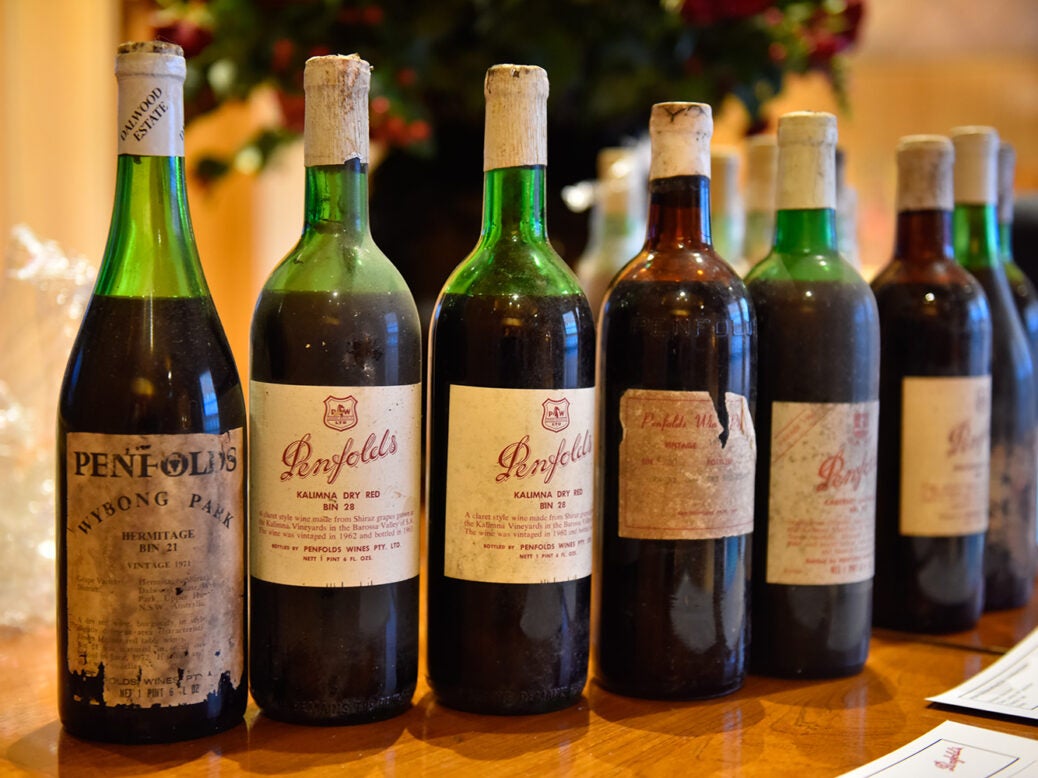
“We have ulterior motives for the clinics,” Peter Gago admits. “It’s not just about putting new corks into old bottles, but actually removing bad wines from the system.”
“Improving the gene pool.”
Gone are the days when Penfolds chief winemaker Peter Gago could assess whether an old bottle was genuine and probably sound simply by checking whether any red dirt remained between the protruding script on the bottle, which would then have been pulled out of the earth at the very back of the Penfolds cellar.
Penfolds re-corking clinics are celebrating 25 years of exclusive after-sales service with a worldwide tour from August through to November, 2016, visiting Australia, the UK, USA, and Canada. Over the past quarter-century the company has recorked more than 130,000 bottles. The re-corking clinics are a health check for wine, offering collectors a complimentary assessment on Penfolds red wines aged 15 years or older, whether they are bringing one bottle or many cases, as big collectors, hotels, or restaurants do.
“After 25 years, the Re-corking Clinics continue to amaze and evolve, transcending all our expectations. The notion that every bottle has a story continues to reign true. As winemakers, it is so meaningful and rewarding to meet collectors and share their personal story of their wine’s unique journey.”
The World of Fine Wine had the pleasure of attending a UK re-corking clinic held at Haberdashers’ Hall, London, Friday, September 30, when we spoke to Gago as he took us through the procedure.
The first step of health assessment involves evaluating the ullage and checking for any signs of leakage. When the wine level is still very high into the neck the bottle passes its first test and does not require any further treatment, so is returned to its owner and sent on its way, with a recommendation to consider the “best case scenarios” in The Rewards of Patience (7th edition, 2013), the comprehensive periodic review of all Penfolds wines, including notes from independent critics.
If the level is too low, the bottle receives a white dot, which generally indicates that the wine should be drunk immediately or within the year or so. Two white dots and there’s the risk of tears, as the wine may well be undrinkable.
Levels in between and the wine is further assessed through visual inspection and tasting, following a careful extraction of the cork – Penfolds recommends a double helix (using the worms of two corkscrews at once) or butler’s thief to minimize crumbling. While the cork is removed, inert argon gas is puffed into the bottle, which is also sealed with a stopper to protect the wine from oxidation. Peter and the owner will taste no more than 2 percent of the wine to confirm that it’s worth re-corking. All being well, the wine is topped up – with the same wine, or a later vintage of the same wine, whenever possible – and certified with a code and signature from the winemaker indicating the authenticity and correct style of the wine. A high-quality cork is inserted with a corking machine, which also sucks the air out via a vacuum and adds a final puff of argon. The finishing touch is the addition of a new Penfolds red cap.
During our re-corking clinic in London, we witnessed two bottles being re-corked – both 1986 Bin 389 – which were both topped up with 2008 Grange, a wine that we also had the opportunity to taste.
The clinics are so popular in Australia – particularly in Sydney and Melbourne – that the Penfolds team often has to try to keep the noise down. At these clinics they may have eight stations set up over three days and a separate room for any money-related matters (where people who may be interested in a valuation or selling the wine may consult a representative from an auction house). It wouldn’t be uncommon to see one wine station dedicated for half a day to one collector’s stash. The most recent UK clinic had two stations during a one-day pop-up, and a representative from Christie’s on hand.
Collectors travel from around the country to attend the free clinics, one attendee in London having a bottle tested ahead of his 75th birthday celebration, when he planned on drinking it.
Penfolds re-corking clinics occur every year in Australia and normally visit the UK every five years, but due to the 25th anniversary one returned here at the three-year mark, with the next visit expected in 2020.
Peter emphasizes: “By re-corking this bottle am I giving the wine another 30 or 40 years of life? No, I’m simply repairing it.”
As we enjoy a taste of the 2008 Grange, a member of Penfolds hints at the time. Peter jokingly exclaims, “We’re kicking these people out are we? We’re having a drink!”
2016 Penfolds Re-Corking Clinics
Perth, Aus 9 – 10 August
Brisbane, Aus 18 – 19 August
Sydney, Aus 6 – 8 September
Melbourne, Aus 20 – 22 September
London, UK 30 September
Adelaide, Aus 11 – 12 October
New York, US 21 October
Miami, US 25 October
Vancouver, CA 28 October
Los Angeles, US 2 November






